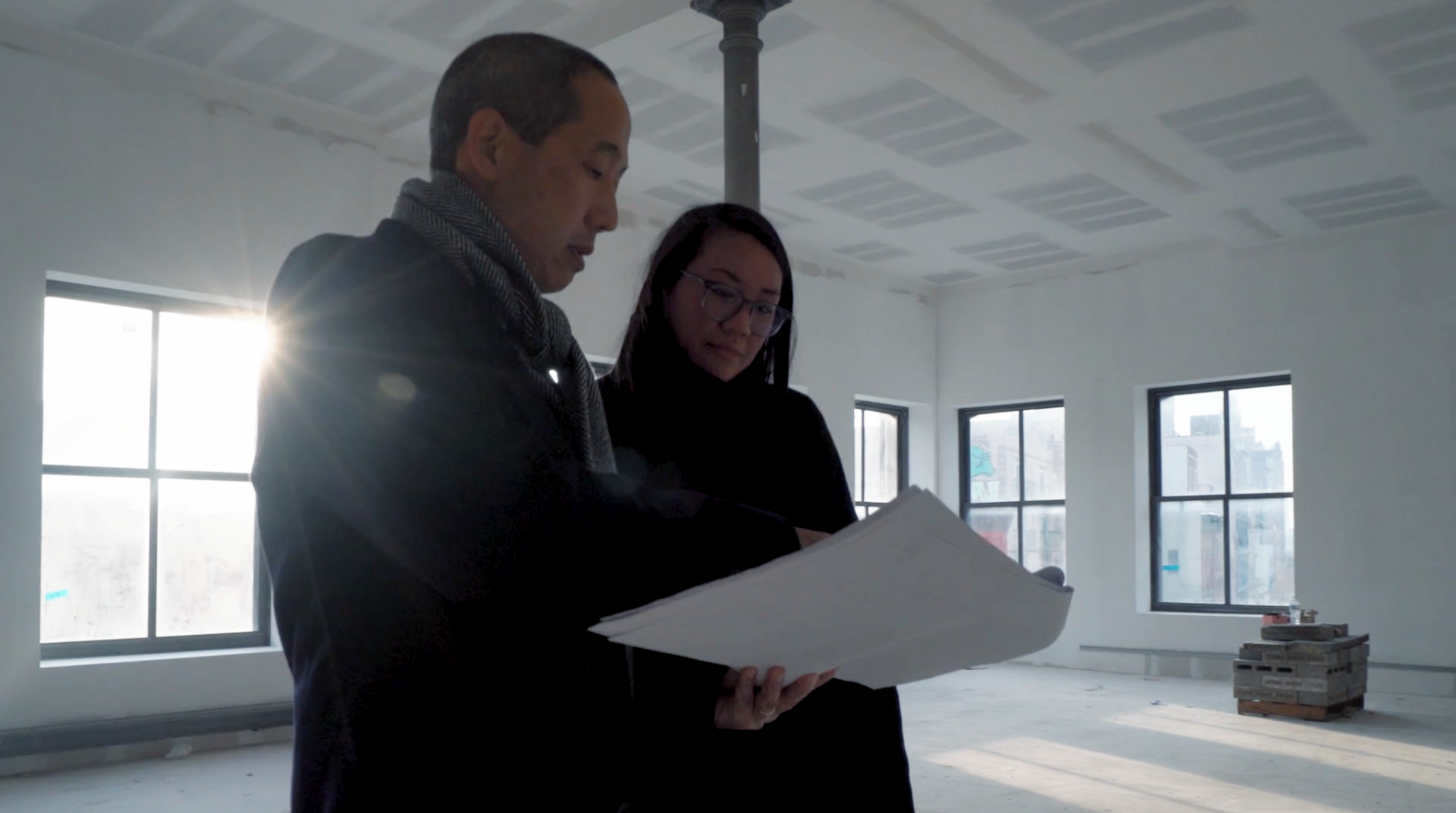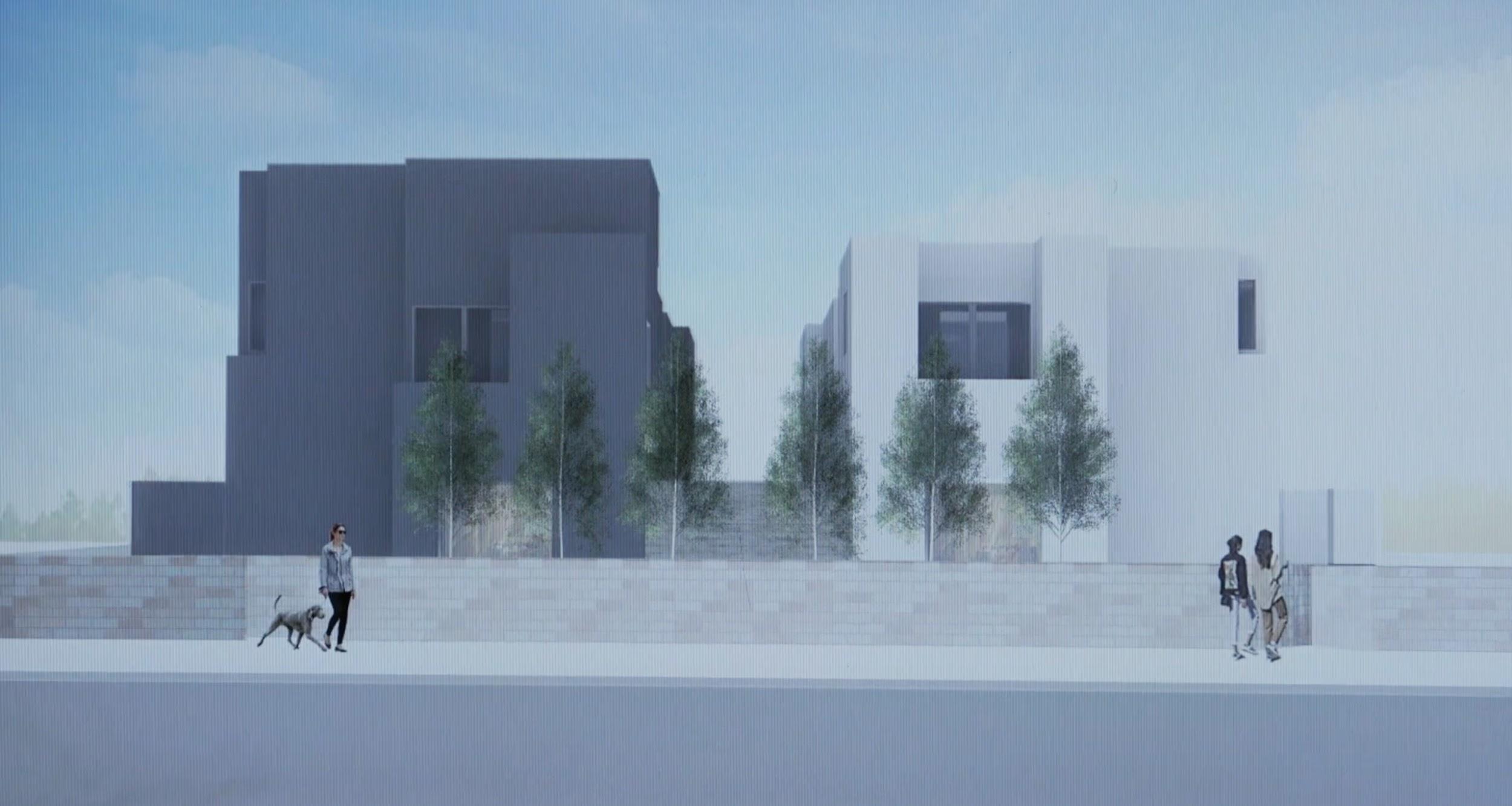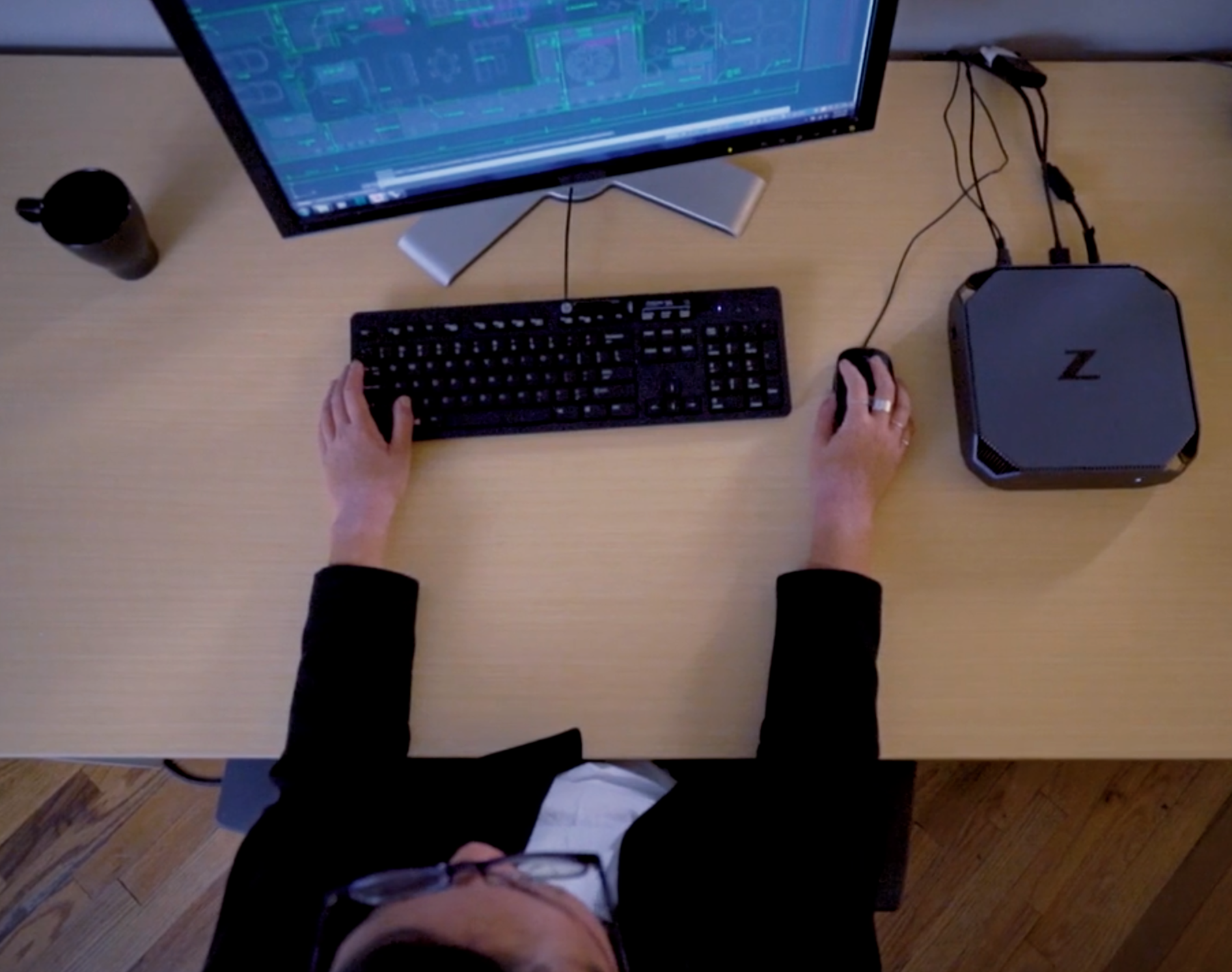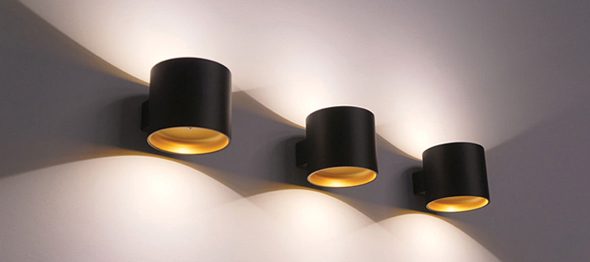Brooklyn-based architecture firm INABA WILLIAMS understands that, beyond the moment of their completion, great buildings are defined by the life that unfolds within them. Viewing architecture as a frame for the unique daily activities of its clients, the practice relies upon explorative research an iterative design process to identify the true programmatic nature of each project.
Given their rigorous approach, the architects’ journey from concept to completion requires a seamless blend of great client communication, fluid teamwork and flexible technology. This made INABA WILLIAMS the ideal firm to test HP’s powerful but compact new workstation, the Z2 Mini. Through its product seeding program, HP provided the workstation to the firm to try out on a number of active projects.

Firm co-founder Jeffrey Inaba and Project Design Associate Sharon Leung discuss a project on site in Brooklyn, New York
“INABA WILLIAMS is … focused on making great spaces that are also informed by other factors outside of architecture, like cultural communications [and] social aspects,” explained Sharon Leung, Project Design Associate at the firm. This crucial early stage in the formulation of a project allows the architects to balance the unique social and economic factors engrained within a site as it begins to shape its design concept.
“The research phase is unusual in that it’s not just quantitative economic analysis, nor is it just cultural analysis to understand the cultural context of a commission or a company,” said Jeffrey Inaba, one of the firm’s co-founders and a keen advocate for research-led design. “It’s not taking what might be the obvious information from both of those sets of data, but rather to think about how those things could be combined in such a way that creates unique insights, that gives value to a project, culturally as well as economically.”
Inaba describes his practice as a “design and research firm”, placing as much importance on the strategic, long-term planning of projects as the design process itself. The architect views architecture as content, with buildings, spaces and even urban master plans directly informing the activities and interactions of people on a daily basis. As with the creation of any content, this approach requires extensive research and collaboration before the optimal asset emerges.

The portability of the Z2 Mini means design team can effortlessly shift from studio work to video conferences with their California partner Darien Williams

Architectural visualization of the Santa Monica residences, Cali.
One project formulated using this approach was a pair of houses situated on a compact site in Santa Monica. The architects needed to maximize the use of the available space without limiting natural light entering each home. Using the Z2 Mini, the design team was able to work in continual collaboration with Inaba’s partner Darien Williams, situated thousands of miles away in California. “We hold these ‘precedent meetings’ from time to time with our partner … to see how projects related to ours might inform different parts of the project,” said Leung.
Gaining valuable insights from Williams via video conferences and shifting seamlessly between 2D and 3D representations, the team arrived at an elegant solution — two beautiful residences situated around a sunlit courtyard. CAD drawings and 3D visualizations can be worked on and shared quickly between design team members on both sides of the continent thanks to the Z2 Mini’s processing power.

Sharon Leung’s CAD work is powered by the diminutive Z2 Mini
The Z2 Mini’s diminutive size makes it perfect for Inaba’s creative process — the workstation can be effortlessly transported from studio to meeting room and back, allowing the architects to pour over drawings and models as they craft their design. The workstation possesses the power of many high-end desktop computers with the portability of a laptop, offering an ideal balance between flexibility and functionality.
Catalyzed by this technology, INABA WILLIAMS’ methods can lead to unexpected proposals with long-term benefits that reveal themselves years on from a project’s completion. “We’ll look at precedent studies, which might be a thing that a client is not interested in at all,” said Inaba. “But for us, it’s a way to see how we can connect the project and give it relevance over a larger timeframe.”

The Z2 Mini integrates seamlessly into Inaba Williams’ flexible workspace
The evolving dialogue between architect and client — and between members of the firm itself — means that change is constant during design development, and it is vital that the firm’s technology can keep up. As INABA WILLIAMS continues to blend collaborative research with innovative design practices, HP’s Z2 Mini Workstation emerges as the perfect catalyst for its workflow.









